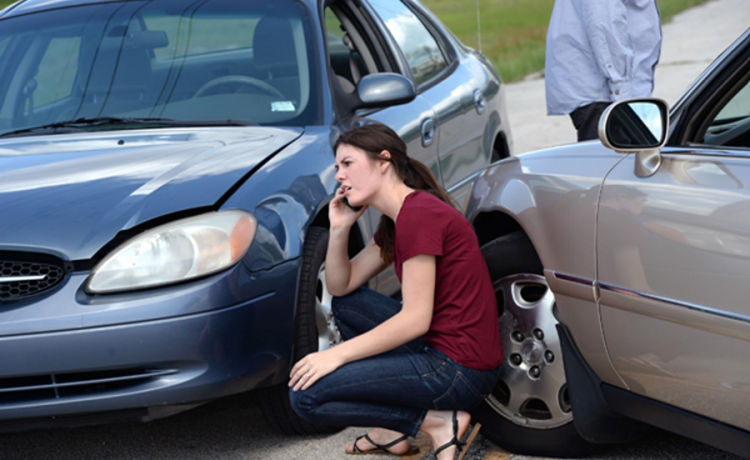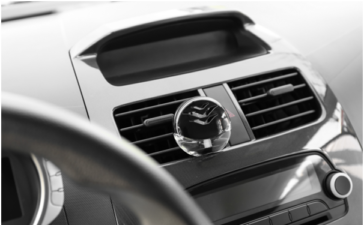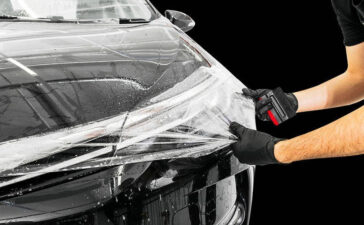Did you know that the average person will get into about three to four car accidents over a lifetime? This is according to industry studies, which also found that 77{7e0259aaa3060fed66852291a7d473d02e5444f60b251106bbd92dbe50858870} of drivers have already been in one accident.
In the US alone, road accidents are far too widespread: in 2019, they injured an estimated 4.4 million people. Worse, these incidents claimed 38,800 lives.
With such unfortunate events being so common, it’s best that you know what exactly to do after a car accident. This way, you can better prepare yourself in case the odds won’t be in your favor.
On that note, check out our guide below on how you should act and the steps to take if you get into an auto accident.
1. Stop and Engage Your Hazard Lights
All US states require drivers who get into accidents, no matter how minor they are, to stop at the scene. Failure to do so can result in the fleeing motorist to get charged with a hit-and-run offense or crime. Do note that such incidents are widespread, occurring at a rate of one per 43 seconds.
When you do stop, try your best to maneuver your car to the side of the road. If severe damage renders your car immovable, you may still be able to engage its hazard lights. Do so to alert other motorists about the accident.
2. See if Anyone Needs Emergency Medical Help
When the body is under extreme stress or fear, such as after a car accident, a surge of adrenaline is sure to follow. This adrenaline rush, in turn, can unleash a kind of superhuman-like strength. If this occurs, it may give you a fake sense of being alright, even if you’ve actually sustained injuries.
In addition, adrenaline, or epinephrine, can also dampen the body’s ability to feel pain. What’s more, the effects of this “fight or flight” hormone can last for up to an hour after the adrenaline rush.
It’s for this reason that you should inspect your entire body for any severe injuries right after a crash. Move those joints and see if there’s any part that has become numb. If there is, or if you have significant bleeding, dial 911 right away.
Be sure to ask each of your passengers how they’re feeling too. If anyone has fainted or is non-responsive, don’t delay calling emergency medical help.
3. Get in Touch With the Local Authorities
Ring up the sheriff’s office or the local police to let them know about the vehicle collision. In most states, drivers must report a road accident that causes injuries. The same goes if there’s any property damage that goes beyond a specific dollar amount.
In most states, you need to call the police if the property damage appears to be worth $1,000. In California and Indiana, it’s $750, and in several others, like Delaware and Florida, it’s $500. In Colorado, however, any crash that leads to any kind of property damage warrants a call to the police.
Regardless of how much you think the damage is, it’s best to contact the authorities. Trained law enforcement officers will help minimize the confusion in such traumatic situations. They will protect the scene of the accident and also investigate the incident.
If you’ve only been in a minor car crash, the police may not come out to the scene. They may only tell you to exchange relevant details with the other parties involved.
4. Limit Conversation With the Other Party
Let’s say the officer simply tells you to exchange information with the other driver. In this case, it’s best to also ask the police officer’s name and badge number. This way, you can get back to them if any claims-related issue occurs in the future.
Once you’re ready to talk with the other party, be sure to get the following details:
- Name of the driver (or drivers, if there were multiple cars involved)
- Complete address
- Contact numbers
- Name of their car insurance company
- Auto insurance policy number
- License plate number
- Vehicle’s state of registration
It’s also best to ask the other driver for the contact details of their specific insurance agent. Of course, be sure to share your details with the other party, too.
You should also ask the other driver if you can see their actual drivers’ license and insurance card. This ensures that they indeed have a license and a policy. Keep in mind that an estimated 11 million people in the US drive with a suspended license.
Not only is that against the law, but it also means that they don’t have auto insurance. Indeed, a 2017 study found that in 2015, one in eight drivers had no auto insurance at all. However, many drivers who have a valid license may not have insurance (or enough of it).
In any case, be extra careful when speaking with the other involved parties. Limit your conversation to just swapping the details listed above. Don’t apologize, but don’t play the blame game either.
5. Take Photos and Videos of the Accident Site
If you don’t have significant injuries, take as many photos and videos of the scene as you wait for the police. You should take pictures from every angle, including bird’s eye views. Be sure to snap close-up photos and from afar.
As you take a video, recount every bit of detail you can remember from before, during, and right after the crash. Maybe you’ve seen the other driver talking into their phone right before the accident. Or perhaps they were trying to overtake you and, in doing so, caused the collision.
Whatever you can recall, record it in voice while you slowly span your camera across the scene.
It’s also important to take photos or videos of any skid marks. If you can, take a 360-degree video of the scene and the surroundings. Make sure that you allow for a few seconds of recording for each frame of the clip.
6. Speak With Witnesses
Credible witnesses are vital in proving fault in all types of personal injury cases. For one, insurance adjusters or juries think that bias exists in the involved parties. The claimant, after all, seeks money from the defendant, but the latter doesn’t want to pay money to the former.
As such, it’s incredibly crucial for you to look for a credible, neutral witness. They can be regular bystanders or pedestrians who happened to be at the scene when the crash took place. They can also be other motorists, cyclists, or shop attendants.
Regardless of who they are, it’s vital that you speak to them right after the car accident. Ask them if you can record their account on your smartphone. Don’t forget to ask for their names and their contact information.
7. Inform Your Auto Insurance Company About the Incident
It’s best to contact your insurer while you’re still at the scene of the crash, and while the police are still there. They may ask for additional information, such as the police report number. Your insurance company may also require you to furnish them with a copy of the police report.
It’s also a smart idea to tell your insurer that you’ve obtained photographic proof of the crash. Let them know that you’ve gathered witness accounts. This way, your insurance agent can tell you if there’s any other document they need from you.
8. Visit a Doctor Right After a Car Accident
Were you aware that some types of car crash injuries, such as whiplash, have delayed symptoms? What’s more, a study found that the effects of whiplash injuries can last for five years or more! Traumatic brain injuries (TBIs) can also have delayed and chronic symptoms.
As such, it’s best that you see a doctor right after a motor vehicle collision. This way, you can make sure that you don’t have any “hidden” injuries.
Moreover, your medical reports can serve as the grounds for a possible lawsuit. At the very least, these documents can help you make sure that you’ll receive a fair settlement amount.
9. Consult With a Car Accident Attorney
You should also speak with a personal injury attorney specializing in car accidents. This is especially important if the other driver (and their insurer) is uncooperative. The other party may also be countering your claims saying that the crash was entirely your fault.
In any case, a personal injury attorney can help you navigate the complexities of filing a claim. At the very least, they will ensure that you receive a fair settlement. However, they will also review your case to see if they can take it to court.
Keep a Copy of This Guide on What to Do After a Car Accident
There you have it, your ultimate guide on what to do after a car accident. Since there are many steps involved, it’s best to save a copy of this in your phone or print it out and put it in your glove box. This way, you can keep the guide handy in case you get into an accident that leaves you dazed and confused.
Want to stay up-to-date on the latest in travel, transportation, and even home and health? Feel free to browse our other guides and how-tos then, and don’t be shy to connect with us on social media!









